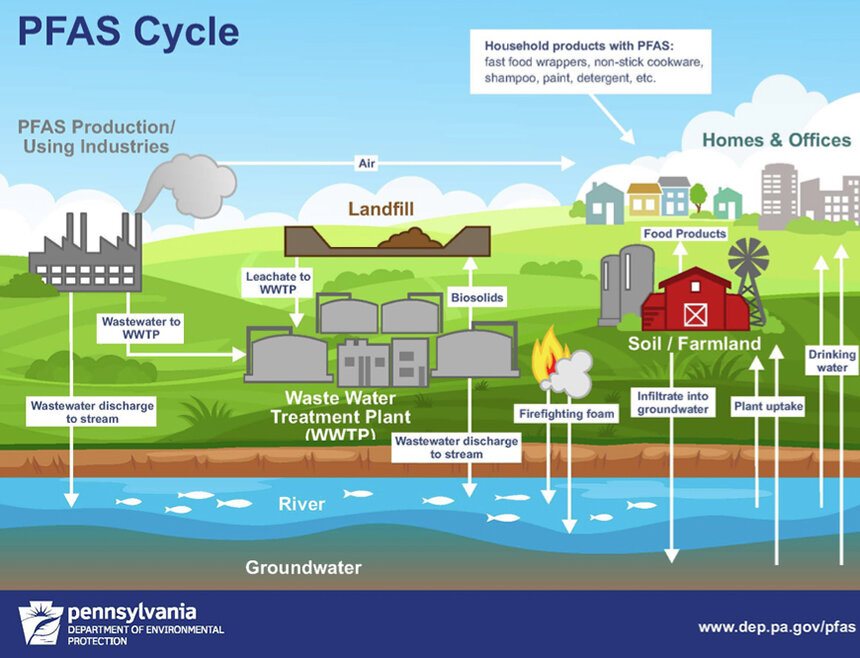Pawtucket’s Remediated Brownfields Improve River, Community Health
January 10, 2022
PAWTUCKET, R.I. — The future of a city is built directly on its past. In another lifetime, Pawtucket was Rhode Island’s beehive of industrial activity, and as a result, has some of the highest concentrations of highly polluted brownfield sites in the state.
The Blackstone and Seekonk rivers, once known as some of the most impaired rivers nationwide, have made impressive recoveries over the past few decades, and the city has aggressively remediated and redeveloped its polluted landscape.
“If a brownfield site has been identified and the right steps have been taken to cap and close it … then they’re relatively safe, especially for things like canoe or kayak access,” Kate McPherson, riverkeeper at Save The Bay, said.
Pawtucket has 22 known brownfield sites along its riverfront, according to the Rhode Island Department of Environmental Management (DEM). The state agency lists only three as unremediated. One is Tidewater Landing, the future home of a $284 million, mixed-use soccer stadium, and another is an industrial mill at the end of Blackstone Avenue. DEM officials said final capping activities at another property on Blackstone Avenue were recently completed and the site should be delisted as an active brownfield later this year.
Since 1996 the Environmental Protection Agency (EPA) has sent $46 million to Rhode Island for brownfield remediation and related activities, and to date Pawtucket has received $3,423,921 of those funds. DEM has provided the Pawtucket brownfield sites with another $1,121,365 in assessment grants, used to investigate what toxic materials reside within these properties.
A total of $1 million in EPA cleanup grants were split among nine brownfield sites along Branch Street. First developed as a residential area as far back as the late 1800s, the old mill properties gradually became abandoned starting in the 1970s. Investigations have since found arsenic, lead, polycyclic aromatic hydrocarbons (PAHS), and petroleum products in the soil and groundwater.
But today, instead of being blighted lots overgrown with invasive plants, the remediated Branch Street parcels are home to affordable housing. Pawtucket Central Falls Development obtained five EPA cleanup grants in two years to prepare the parcels for construction. The nonprofit spent $10.8 million to build 29 affordable housing units across four buildings on Branch Street overlooking the Blackstone River.
The units are rented to households earning up to 60 percent of the area’s median income, and rents range from $650 to $1,000.
Further downstream, another $600,000 in EPA cleanup grants was awarded to two properties on Front Street. The brownfields at 164 and 182 Front St. were historically the site of industrial manufacturers of clothing and soap. A state investigation showed the sites contained asbestos, lead, PAHS, and petroleum products in the groundwater and soil.
The properties were redeveloped into green open space, with grass, trees, benches, and links to the Blackstone Valley Bikeway.
All of the city’s remediated sites have land-use restrictions attached, limiting the kind of development that can be built. The sites are inspected by DEM every one to two years to ensure the contamination controls remain operational. But the agency has limited staff. Only seven full-time employees work in its remediation department, and they are responsible for thousands of brownfield sites statewide.
The aggressive remediation of Pawtucket brownfields has meant dividends for its urban rivers. Thirty years ago the Seekonk River was known as one of the most impaired waterways in the entire country, and observers say it is coming back to life.
“We’ve got bald eagles… there’s river otters, there’s osprey, there’s deer, coyotes, skunks, raccoons, a whole world of wildlife,” said Alex Hornstein, the local resident who initially reported both of the recent Tidewater oil spills to state and federal officials.
But stormwater runoff remains a concern. Nitrogen loads primarily from fertilizers spread on lawns are routinely washed into the river whenever it rains, leading to hypoxia — low-oxygen conditions — and fish kills. Since 2018 there have been six recorded fish kills, and DEM is investigating a seventh possibly connected to last year’s Tidewater oil spills, although its experts likely say its a case of cold shock.
Excessive nutrients, such as nitrogen, stimulate the growth of algae, leading to a domino effect that damages the river’s health and impacts life on, in, and around it. Algae prevents the penetration of sunlight, which kills aquatic plants, and any animals that rely on the vegetation will either leave or die. As algae decays, it siphons oxygen from the water, causing fish and shellfish to die and opening space for harmful invasive species to take root.
With the Tidewater site being the final brownfield to be remediated, and the Narragansett Bay Commission working on the third phase of its Combined Sewer Overflow Abatement Program, the Seekonk River’s future looks healthier.




The Seekonk Revitalization Alliance is working to preserve the forests in the area too. The Seekonk basin contains the longest stretch of tidewater meeting forest in Rhode Island.